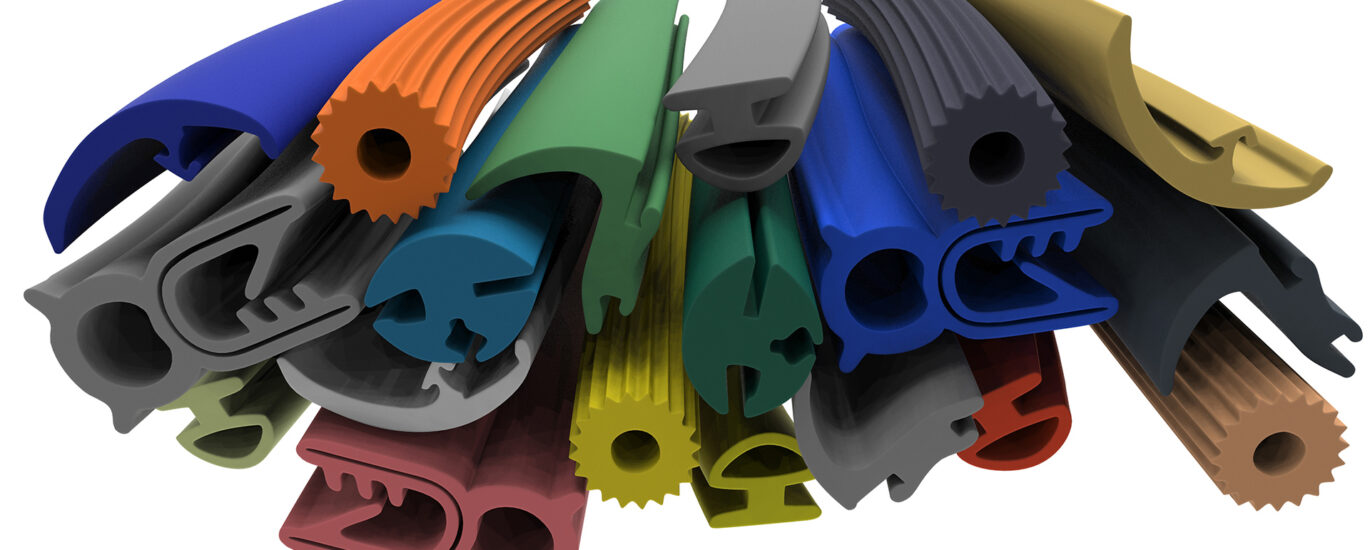In 2023, the Plastic-Rubber Composite Market is expected to be worth US$ 2,170.9 million. The market is expected to reach US$ 3,638.5 million by 2033, expanding at a 5.3 % CAGR throughout the forecast period. In comparison to single materials, these composites offer better performance characteristics. These composites can improve the overall performance, safety, and comfort of automobiles by combining the qualities of both plastic and rubber, such as impact resistance, durability, noise reduction, and vibration dampening.
The Organization for Economic Co-operation and Development (OECD) estimates that in 2022, passenger automobile sales in the UK will rise by 13.9%. In order to meet the rising demand, manufacturers are increasing their manufacturing capabilities by doubling and adding lightweight technology.
Compared to conventional materials, plastic-rubber composites offer more design and flexibility. Manufacturers focus on creating unique and aerodynamic designs which can be molded into intricate shapes and integrated with other parts. This adaptability makes it possible to create vehicles with interiors and exteriors that are both sleek and aesthetically pleasing.
Get ahead of the competition by accessing valuable insights from industry experts. Download our sample now and unlock the key to effective growth strategies @ https://www.futuremarketinsights.com/reports/sample/rep-gb-17742
In order to increase fuel efficiency and meet strict emission requirements, manufacturers are putting more and more effort into making their vehicles lighter. These composite blends provide a lightweight substitute for conventional materials like metal, assisting in total vehicle weight reduction and fuel efficiency improvement and offering cost advantages over traditional materials. They often require less energy and lower production costs during manufacturing processes like injection molding. The ability to produce complex shapes in a single operation reduces assembly costs, making plastic rubber composites an economically viable option for automobile manufacturers.
Key Takeaways from the Plastic-Rubber Composite Market:
- The Plastic-Rubber Composite industry in the United States is predicted to reach US$ 531.9 million by 2033, increasing at a 4.7 % CAGR.
- The Plastic-Rubber Composite industry in India is estimated to reach a market share of US$ 163.0 million, expanding at a CAGR of 5.2% by 2033.
- During the forecast period, the Plastic-Rubber Composite industry in China is expected to reach a market share of US$ 995.5 million, securing a 5.5 % CAGR.
- The Plastic-Rubber Composite industry in Japan is predicted to reach US$ 193.6 million by 2033, increasing at a 5.2 % CAGR.
- With a CAGR of 5.1% from 2022 to 2033, the Automotive industry is expected to dominate the Plastic-Rubber Composite industry.
- With a CAGR of 4.3% from 2022 to 2033, the Industrial Equipment industry is expected to dominate the Plastic-Rubber Composite industry.
How Does the Competition Look in the Plastic-Rubber Composite Market?
The market is Consolidated, with key players vying for market share. Key players in the industry are focusing on innovative applications, such as aerospace. They are also expanding their product portfolio to include new and emerging applications, such as sealing, resistance to UV radiation, and long-term durability. This helps them to reach a wider range of customers and grow their business.
Several significant participants in this industry
- BASF SE
- Dow Inc.
- DuPont de Nemours, Inc.
- Solvay S.A.
- Arkema S.A.
- Covestro AG
- Mitsui Chemicals, Inc.
- LG Chem Ltd.
- SABIC
- Sumitomo Chemical Co., Ltd.
Get a deeper understanding – Request the full report methodology now! https://www.futuremarketinsights.com/request-report-methodology/rep-gb-17742
Segmentation Analysis of the Market
By Product Type:
- Thermoplastic Elastomers (TPE)
- Ethylene Propylene Diene Monomer (EPDM) Thermoplastics
- Rubber-Modified Plastics
- Over-molded or Insert-Molded Composites
- Others
By Application:
- Automotive Industry
- Consumer Goods
- Construction and Infrastructure
- Electrical and Electronics
- Healthcare and Medical Devices
- Industrial Equipment
- Others
By Region:
- North America
- Latin America
- Western Europe
- Eastern Europe
- East Asia
- South Asia and Pacific
- The Middle East and Africa
About Future Market Insights (FMI)
Future Market Insights, Inc. (ESOMAR certified, Stevie Award – recipient market research organization and a member of Greater New York Chamber of Commerce) provides in-depth insights into governing factors elevating the demand in the market. It discloses opportunities that will favor the market growth in various segments on the basis of Source, Application, Sales Channel and End Use over the next 10-years.
Contact Us:
Future Market Insights Inc.
Christiana Corporate, 200 Continental Drive,
Suite 401, Newark, Delaware – 19713, USA
T: +1-845-579-5705
LinkedIn| Twitter| Blogs | YouTube
For Sales Enquiries: sales@futuremarketinsights.com

